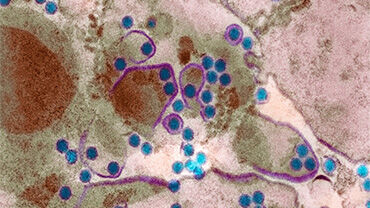Rapid risk assessment: Local transmission of dengue fever in France and Spain
In the context of locally acquired cases of dengue fever in southern France and Spain, this risk assessment considers the risk of onward vector-borne transmission locally and in other areas of the EU/EEA.
Executive Summary
In early October, nine cases of autochthonous dengue were confirmed in the EU, three in Spain and six in France, in three separate outbreaks. These are the first autochthonous dengue cases in continental EU/EEA Member States that were reported this year. Prior to these cases, no autochthonous dengue cases had been reported in continental EU/EEA Member States since 2017. Epidemiological investigations are ongoing.
There is no epidemiological link between the two outbreaks in France (five cases in Saint Laurent du Var, one case in Montpellier), and it is uncertain whether the cases in Spain were infected in the region of Murcia or in the Province of Cádiz. The virus was likely to have been introduced into these areas through viraemic travellers returning from endemic areas.
Sporadic autochthonous cases, or small clusters, of dengue fever occasionally occur in Europe after the introduction of Dengue virus (DENV) by viraemic travellers into areas where Aedes albopictus mosquitoes have become established and during the season when Ae. albopictus are active and temperatures are favourable. Locally acquired dengue cases were documented in southern France in 2010, 2013, 2014 and 2015. In Spain, this is the first recorded cluster of locally acquired dengue cases, which was not unexpected since Ae. albopictus has been present in the country since 2004.
Detection of further cases in the affected regions and elsewhere is possible. Ae. albopictus is normally active in the area of Saint Laurent du Var until the beginning of November, while in Montpellier the active period for Ae. albopictus can even last until early December, as reported for December 2014. The prolonged active period was possibly related to flooding in the area. Ae. albopictus is active in several provinces in Spain. In previous seasons,
Ae. albopictus was found to be active until the beginning of December. It may, to a limited extent, also be active during winter, but this activity is unlikely to be sufficient to sustain transmission.
The risk that visitors to the affected areas may become infected and introduce the virus to their country of residence cannot be excluded. However, historically, dengue outbreaks in Europe have had a maximum of seven reported autochthonous cases and always occurred during the season of high vector activity. Therefore, the likelihood of onward local transmission and of introduction of the virus from France and Spain into other receptive areas in the EU/EEA with subsequent sustained local transmission is very low.
Download








